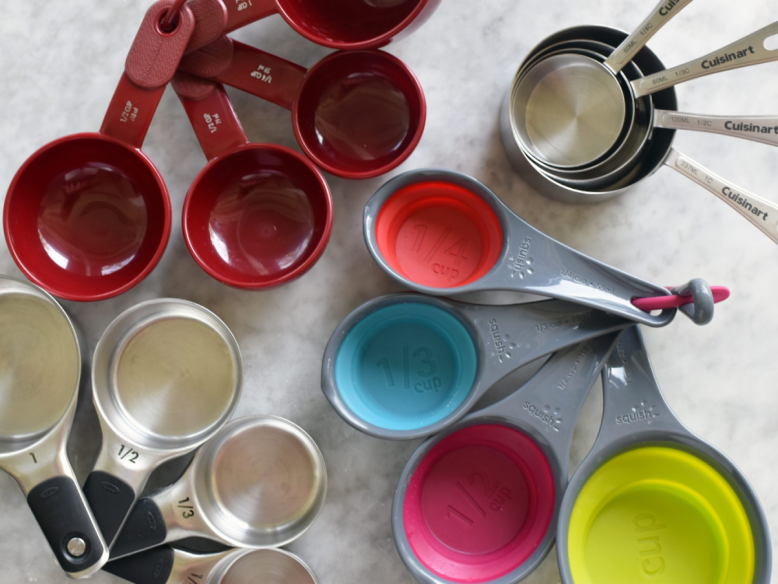Bhaga Shastra gives cooking ingredients measurements, in measurement systems used in the olden days. These are the units of measurements used in the kitchens of ancient Tamizh Civilization. In the Bhaga Shastra, measurements are indicated in padi, palam, veesai, veesam, R.e, Ku.e, and so on.
The most striking aspect of these measurements is that they have been defined to the minutest detail in the Bhaga Shastra, and have existed in India since time immemorial. These units of measure endured for 1000s of years and were used by grandmothers in Tamil Nadu right until the 1970s, after which they have disappeared from common usage. Nowadays, globally accepted measurements such as milligrams, grams, kilograms, ounce, pounds, stones, for solids and millilitre, litre, kilolitre for liquids are in vogue.
This has made it essential to arrive at a conversion table, to enable Bhaga Shastra enthusiasts to measure ingredients for the 400+ recipes into modern parlance to cook and offer the arrays of foods as naivedyam to the Supreme Pontiff of Hinduism, His Divine Holiness Sri Nithyananda Paramasivam.
Hence, please use the conversion guidelines below to convert it into modern measurement systems. When giving this recipe, we are not rounding any measurements in the modern units, so as to avoid any deviations from the Bhaga Shastra.
Note:
To convert from grams to cups, use this link:
https://www.convertunits.com/from/grams/to/cups
For conversion from grams to teaspoons, use this link:
https://www.convertunits.com/from/grams/to/teaspoons

Measures used in traditional kitchens, to measure solids such as grains, lentils, millets, etc.

Kitchen Measures used in traditional kitchens in India, to measure liquids such as milk, oil, etc.

A modern day digital kitchen weighing machine

An array of measuring spoons and cups

An all-purpose jug, used for measuring both solid and liquid ingredients in cooking
Conversion Table from Bhaga Shastra Measurement to Grams / Litres
Padi
One padi for Liquid = 1.6 ltrs
Half padi = 0.8 ltrs
One and half padi = 2.4 ltrs
One padi for Solid = 1500 gms
1 padi = 1500 gms approx
½ padi = 750 gms
¼ padi = 375 gms
⅛ padi = 187.5 gms
1 ½ padi = 2250 gms
2 padi = 3000 gms
3 padi = 4500 gms
4 padi = 6000 gms
Kalpadi or 2/8 padi = 375 gms
Araikal ⅛ padi = 187.5 gms
Kalearaikkal or ⅜ padi = 562.5 gms
Palam
One palam = 35 gms
1/2 palam = 17.5 gms
1/4 palam = 8.75 gms
3/8 palam = 13 gms
2 palam = 70 gms
3 palam = 105 gms
4 palam = 140 gms
5 palam = 175 gm
6 palam = 210 gms
7 palam = 245 gms
15 palam = 525 gms
25 palam = 875 gm
Re. Wt. (Rupee Weight)
1 Re.Wt) = 4.8 gm
(½ Re. Wt. = 2.4 gms
⅛ Re. Wt. = 0.6 gm
¼ Re. Wt. = 1.2 gms
Veesai
One Veesai = 1400 gms / 1.4 kgs
One Veesai = 40 palams
120 R.e = 1 padi (R.e means Rupee Equivalent)
3 Ku.e = 1 palam (Ku.e means Kunri Mani Equivalent)
40 palam = 1 veesai
1 varaganedai = 1.067 gms / 4.2 gms
10 varaganedai = 1 palam = 10.67 gms
1 nel edai = 8.33 mgm
1 azhakku = 168 ml
1 uzhzkku = 336 ml
1 paalaadai = 30 ml
1 ounce = 31 gms
5 sevidu = 1 azhakku
2 azhakku = 1 vuzhakku
8 azhakku = 1 padi
Veesai is also a unit of solid volume
Azhakku is a unit of liquid volume
It was used to measure the weight of items such as grains, potatoes, millet and lentils.
And finally,
120 padi = 1 pothi or one mootai or one sack.
These were used to measure the volume of grains or liquids like milk, oil or ghee, grains were also measured and sold in volumes. Hence the use of sack of rice as a measure is often used in current days.
Commonly Used Measurements in Bhaga Shastra
1 padi = 1500 gms approx
½ padi = 750 gms
1 ½ padi = 2250 gms
3 padi = 4500 gms
¼ padi = 375 gms
⅛ padi = 187.5 gms
4 padi = 6000 gms
2 padi = 3000 gms
1 palam = 35 gms approx
3 palam = 105 gms
6 palam = 210 gms
1 ½ palam = 52.5 gms
6 palam = 210 gms
2 palam = 70 gms
¼ palam = 8.75 gms
⅛ palam = 4.37 gms
1/16 palam = 2.18 gms
½ palam = 17.5 gms
5 palam = 175 gms
4 palam = 140 gms


